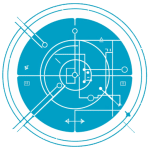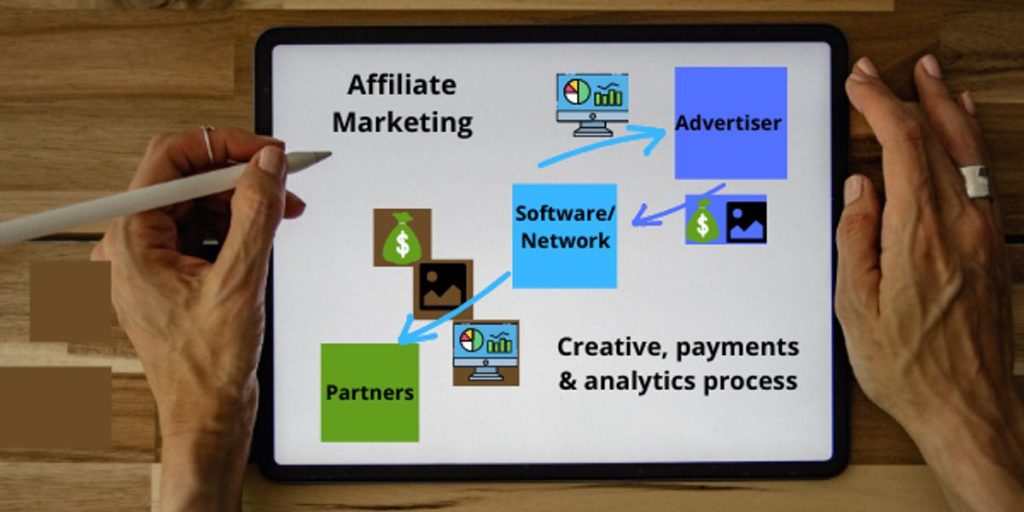In the fast-paced world we live in, productivity is key to managing our time effectively and achieving our goals. Whether you're a busy professional, a student, or someone looking to streamline their daily routine, implementing productivity hacks can make a significant difference. In this article, we'll explore the Top 10 Productivity Hacks for Increased Efficiency, each with its unique approach to helping you work smarter, not harder. Let's dive into these strategies and discover how they can enhance your efficiency and productivity.
Key Takeaways
- Understanding and applying the Pomodoro Technique can help break work into manageable intervals with rest periods to boost focus.
- A Bullet Journal is a customizable organization system that can combine your to-do lists, calendar, diary, and more in one notebook.
- The Eisenhower Matrix is a strategic tool for prioritizing tasks based on urgency and importance, aiding in effective decision-making.
- Kanban Boards offer a visual workflow management method that helps to track progress and streamline tasks through different stages.
- Time Blocking allows for dedicated time slots for specific tasks or activities, ensuring a structured approach to managing your day.
1. Pomodoro Technique
The Pomodoro Technique is a time management method that can transform your work and study habits. Break your workday into 25-minute chunks separated by five-minute breaks, and you'll find yourself powering through tasks with renewed focus. After four ‘pomodoros', take a longer break to recharge.
- Choose a task to work on.
- Set the pomodoro timer (25 minutes).
- Work on the task until the timer rings.
- Take a short break (5 minutes).
- Every 4 pomodoros, take a longer break (15-30 minutes).
This technique is not just about working harder, but also working smarter. It's about making the most of your time and energy.
By using the Pomodoro Technique, you're not only improving your productivity but also creating a better work-life balance. It's a simple yet effective way to tackle procrastination and maintain high levels of energy throughout the day.
2. Bullet Journal
The Bullet Journal is a customizable and forgiving organization system. It can be your to-do list, sketchbook, notebook, and diary, but most likely, it will be all of the above. Streamline your productivity by keeping track of your work schedule, managing projects, scheduling events and deadlines, and taking meeting notes all in one place.
- Keep Track of Your Work Schedule
- Manage Projects
- Schedule Events and Deadlines
- Take Meeting Notes
The Bullet Journal is more than just a planner. It's a methodology that turns the chaos of coordinating your life into a streamlined system that helps you be more productive and efficient.
Start with an index to navigate your entries, and use symbols to denote tasks, events, and notes. Rapid logging is the key to this method, allowing you to capture information as quickly as possible.
3. Eisenhower Matrix
The Eisenhower Matrix is a powerful tool for prioritizing tasks and managing your time effectively. It's all about categorizing tasks into four quadrants based on urgency and importance. Decide what needs your immediate attention and what can wait.
- Urgent and Important: Tasks that you need to do immediately.
- Not Urgent but Important: Tasks that you should schedule to do later.
- Urgent but Not Important: Tasks to delegate to others.
- Not Urgent and Not Important: Tasks that you might not need to do at all.
By using the Eisenhower Matrix, you can focus on what truly matters and avoid getting overwhelmed by less critical tasks.
The Eisenhower Matrix is just one of many time-management methods. If it doesn't work for you, no sweat. Try a different productivity tip instead. The key is to find a system that resonates with your workflow and stick to it for the best results.
4. Kanban Board
If you're looking to visualize your work and maximize efficiency, the Kanban board is your go-to tool. It's all about workflow management and ensuring that you can see at a glance what needs to be done, what's in progress, and what's completed.
The beauty of Kanban lies in its simplicity and adaptability. You can start with a basic board with columns for ‘To Do', ‘In Progress', and ‘Done'. But don't be afraid to customize it to fit your unique process. Add more columns or swimlanes to reflect different stages or teams.
The Kanban board is not just a tool, it's a mindset shift. It encourages continuous improvement and helps identify bottlenecks in your process.
Here's a quick rundown on how to get started:
- Choose a board: Physical or digital, whatever suits your style.
- Map out your workflow: Reflect your actual process in the columns.
- Limit work in progress: This helps to focus and finish tasks more efficiently.
- Monitor and adapt: Use the board to make informed decisions and evolve your process.
Embrace the versatility of the Kanban system; it enables seamless shifts between tasks and can be a game-changer for your overall operation.
5. Time Blocking
Time blocking is a powerful way to plan your day by dividing your time into blocks dedicated to specific tasks or types of work. It's like having an appointment with yourself to ensure you're focusing on what matters most.
Prioritization is key with time blocking. Start by identifying the tasks that will have the biggest impact on your day. Then, allocate blocks of time to these tasks, ensuring you're dedicating your best hours to your most important work.
- Morning: Deep work (e.g., creative tasks, problem-solving)
- Afternoon: Administrative tasks (e.g., emails, meetings)
- Evening: Planning for the next day
By assigning specific tasks to each time block, you can reduce the decision fatigue that comes with constantly figuring out what to do next. This method helps you stay on track and makes your day more predictable and manageable.
6. GTD Methodology
The GTD Methodology, short for Getting Things Done, is a time management system that has revolutionized the way professionals tackle their work. At its core, GTD is about capturing all the tasks swirling in your head and organizing them into a manageable system.
The first step in the GTD method is to identify and record all the tasks that demand your attention, be it menial or something colossal into an ‘Inbox'. This is the foundation of a stress-free productivity approach.
Once you've dumped every to-do into your Inbox, the GTD method encourages you to clarify these tasks. Ask yourself, ‘Is it actionable?' If yes, decide on the next action and when it will be done. If not, discard it or file it away for later. Here's a simple breakdown:
- Capture everything that has your attention.
- Clarify the tasks and decide if they require action.
- Organize tasks by priority and category.
- Reflect on your to-do list regularly to update and prioritize.
- Engage with your tasks and start ticking them off!
By following these steps, you can ensure that nothing slips through the cracks and you're always moving forward with purpose.
7. Focus@Will
In the quest for peak productivity, music can be a powerful ally. Focus@Will takes this concept to the next level by offering a service that combines neuroscience and music to boost concentration. With a variety of channels tailored to different work styles and preferences, you can find the perfect auditory backdrop to your task at hand.
Focus@Will claims to increase attention span and enhance your ability to concentrate. It's not just about playing background music; it's about creating a soundscape that aligns with your brain's frequency to keep you in the zone. Here's a quick rundown of what you can expect:
- A selection of music channels scientifically designed to improve focus
- Customizable timers to work with the Pomodoro technique or your own schedule
- Performance metrics to track your productivity levels
If you're weighing your options, consider the recent comparison that pits Focus@Will against another popular app, Brain.fm. The debate on which app reigns supreme in 2024 hinges on user experience, the effectiveness of the music, the underlying science, and, of course, pricing. Each app has its strengths, but it's the tailored experience and scientific approach that might tip the scales in favor of Focus@Will for many users.
8. Habit Stacking
Habit stacking might just be the game-changer you need to transform your daily routines into a powerhouse of productivity. The concept is simple: link a new habit you're trying to form with an existing habit that's already second nature to you. This way, the established habit acts as a trigger for the new one, creating a chain of behaviors that are easier to remember and follow.
Consistency is key when it comes to habit stacking. By anchoring your new habits to those well-entrenched in your daily life, you're more likely to stick to them. Here's a quick guide to get you started:
- Identify a habit you already do without fail every day.
- Choose a new habit you want to incorporate.
- After completing your existing habit, immediately follow it with the new one.
By repeating this process, the new habit becomes part of your routine, almost as if it's on autopilot.
Remember, the goal is to make small changes that lead to significant improvements over time. Start with something manageable and build from there!
9. Mind Mapping
Mind Mapping is a visual tool that can dramatically boost your productivity and creativity. By representing ideas and concepts in a graphical way, it allows for a more intuitive and comprehensive understanding of the subject matter.
Mind maps are not just for brainstorming; they can be used for project planning, problem-solving, and organizing information. The process of creating a mind map helps to clarify thoughts, see relationships between ideas, and prioritize tasks.
Here's a quick guide to get started with mind mapping:
- Start with a central idea or theme.
- Branch out with main categories related to your central idea.
- Add sub-branches for more specific details.
- Use colors and images to enhance memory and organization.
Mind mapping can turn a complex project into a more approachable and manageable task.
For those who prefer digital solutions, there are numerous mind mapping apps available. Here is a list of some popular digital mind mapping tools available as of 2024, each offering unique features to enhance productivity and creativity.
10. The 80/20 Rule
The 80/20 Rule, also known as the Pareto Principle, is a classic strategy for maximizing efficiency. It suggests that 80% of results come from just 20% of the effort. This principle can be applied to various aspects of life and work, helping you to focus on the tasks that yield the most significant outcomes.
To put this productivity hack into practice, start by identifying the key activities that contribute the most to your success. Here's a simple way to approach it:
- List all your tasks and responsibilities.
- Estimate the impact of each task on your goals.
- Prioritize the tasks based on their impact.
By concentrating on the most impactful activities, you can optimize your time and energy for the best possible results.
Remember, the goal is not to work harder, but smarter. The 80/20 Rule empowers you to make strategic choices about where to invest your resources for the greatest return.
Wrapping It Up
And there you have it—ten simple yet powerful productivity hacks to supercharge your efficiency. Remember, the key to making the most of these tips is to integrate them into your daily routine and tweak them to fit your personal workflow. Don't be afraid to experiment and find what works best for you. With a bit of practice and persistence, you'll be on your way to achieving more in less time. Here's to working smarter, not harder, and enjoying the extra hours you've unlocked in your day!
Frequently Asked Questions
What is the Pomodoro Technique and how does it work?
The Pomodoro Technique is a time management method that uses a timer to break work into intervals, traditionally 25 minutes in length, separated by short breaks. This technique helps to maintain high levels of focus and keeps you refreshed throughout the workday.
How can a Bullet Journal help with productivity?
A Bullet Journal is a customizable organization system. It can act as a to-do list, sketchbook, notebook, and diary, but most likely, it will be all of the above. It's designed to help you organize your what, why, and how for every day, making you more productive and efficient.
What is the Eisenhower Matrix and how can it aid in decision-making?
The Eisenhower Matrix, also known as a Priority Matrix, helps you decide on and prioritize tasks by urgency and importance, sorting out less urgent and important tasks which you should either delegate or not do at all.
How does a Kanban Board improve workflow?
A Kanban Board is a visual tool that helps you manage and oversee your work at various stages of the process. By using cards and columns, you can move tasks through stages (e.g., to do, in progress, done) which helps in tracking progress and limiting work in progress to increase focus and efficiency.
What is Time Blocking and how can it boost my daily productivity?
Time Blocking is a time management method that involves dividing your day into blocks of time. Each block is dedicated to accomplishing a specific task or group of tasks. This method reduces context switching and ensures that high-priority work gets dedicated attention.
Can you explain the GTD Methodology?
GTD stands for ‘Getting Things Done,' a productivity method developed by David Allen. It involves five steps: capture, clarify, organize, reflect, and engage. This method helps manage tasks and commitments efficiently, ensuring that nothing falls through the cracks.
What is Focus@Will and how does it enhance concentration?
Focus@Will is a neuroscience-based music service that helps increase your attention span and general productivity by playing music that is scientifically optimized to help you focus and reduce distractions.
What does Habit Stacking involve, and how can it improve my routine?
Habit Stacking involves grouping together small activities into a routine which you perform in the same order every time. The idea is to make the whole bundle of habits as automatic as brushing your teeth, which can improve efficiency and ensure you get the most out of your habits.












